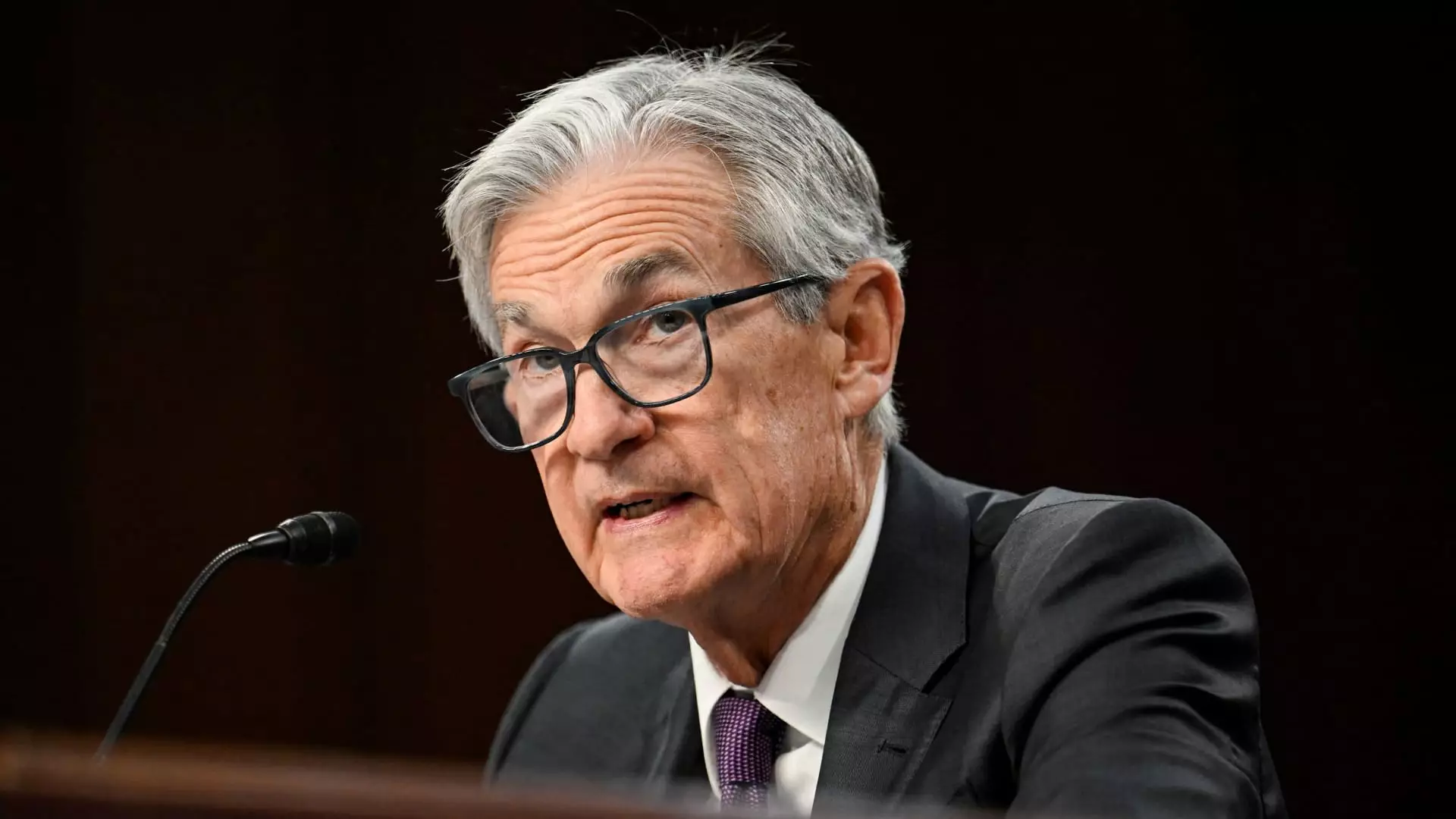In a world where the economic landscape can shift as rapidly as the political tides, Federal Reserve Chairman Jerome Powell’s latest pronouncement reflects a delicate balancing act. With President Donald Trump’s administration embarking on aggressive policy maneuvers that encompass trade tariffs, immigration reforms, fiscal policies, and regulatory changes, Powell asserts that the Federal Reserve must exercise caution before making any significant moves regarding interest rates. This stance might seem prudent, yet it brings forth a myriad of complications that investors and policymakers must contend with.
While Powell’s notion of patience resonates with the historical tenet that hasty decisions can yield undesirable ramifications, it also signals a certain lack of urgency that could paradoxically exacerbate market volatility. Financial markets thrive on predictability and clarity, and the uncertainty surrounding Trump’s policies can destabilize investor confidence. As Powell himself acknowledged, “We do not need to be in a hurry,” a mindset that, while offering a semblance of stability, may inadvertently lead to a stasis that doesn’t reflect the economic reality.
The Real Impact of Trump’s Policy Changes
There’s an undeniable tension between Powell’s optimistic view of current economic indicators and the risks posed by potential policy disruptions initiated by the White House. The Fed Chair describes the country’s economic footing as “solid,” with inflation metrics hovering around the Fed’s target. However, this positive framing does little to assuage the anxiety concerning the net impact of the Trump administration’s policies. Powell’s assertion that the “net effect of these policy changes will matter” raises critical questions: Is the Fed truly prepared to interpret an evolving landscape of tariffs and regulations, or are we veering into a territory rife with unpredictable consequences?
Market participants seem to be operating on a different wavelength, with traders expecting interest rate cuts within the year as a safeguard against the economic repercussions of Trump’s shifting stance on tariffs. Such a disconnect between market expectations and Powell’s cautious outlook could lead to increasing volatility as participants grapple with divergent economic signals.
The Danger of Misreading Inflation Signals
Furthermore, a looming concern is Powell’s observation of heightened “misgivings about the path of inflation” stemming from tariff negotiations. The Fed’s preferred inflation gauge indicating a 2.5% rise is more than just numbers; they represent a fluctuating economic sentiment that could sway public confidence and spending behavior. Misreading inflationary pressures at this juncture could yield severe repercussions—not merely for monetary policy but for everyday Americans who feel the burden of rising prices and shrinking wage growth.
Powell’s assertion that the journey toward stabilizing inflation has been “bumpy” perfectly encapsulates the precarious nature of the current economic climate. If inflation is indeed on an upward trajectory, combined with the uncertainty from policy shifts, the Fed may soon find itself in a position where inaction is no longer tenable.
A Glimmer of Hope in Employment Data
In a somewhat optimistic turn, Powell highlighted recent labor market indicators suggesting resilience. With a reported increase of 151,000 nonfarm payrolls, the foundation of his confident narrative rests on the labor market’s continued recovery. The assertion that wages are experiencing a sustainable upward trend could be seen as a silver lining amidst broader uncertainties. However, one must ask: How long will this growth sustain itself in the face of external pressures arising from tariffs and economic policy shifts?
The average increase in hourly earnings offers minimal comfort when weighed against the broader economic context. If inflation continues to outpace wage growth, the purchasing power of average Americans will deteriorate, placing additional strain on an already fragile economic landscape. Powell’s attempt to paint a picture of healthy labor market dynamics must not overlook the underlying threats posed by the whims of fluctuating policy environments.
The Path Forward: Navigating Uncertainty
Ultimately, the Fed’s trajectory under Powell’s leadership remains veiled in uncertainty. The central bank’s “wait-and-see” approach may be strategically sound in theory, but its practical implications raise pivotal issues. A delay in addressing the critical economic pressures could lead to more severe measures down the road should market conditions worsen. In a climate where political decisions can disrupt economic stability, the Federal Reserve’s commitment to balancing caution with decisive action will determine the efficacy of its monetary policy strategies. As we move forward, the intertwining threads of politics and economics will require astute navigation, and whether Powell can steer us through this turbulent landscape remains to be seen.

